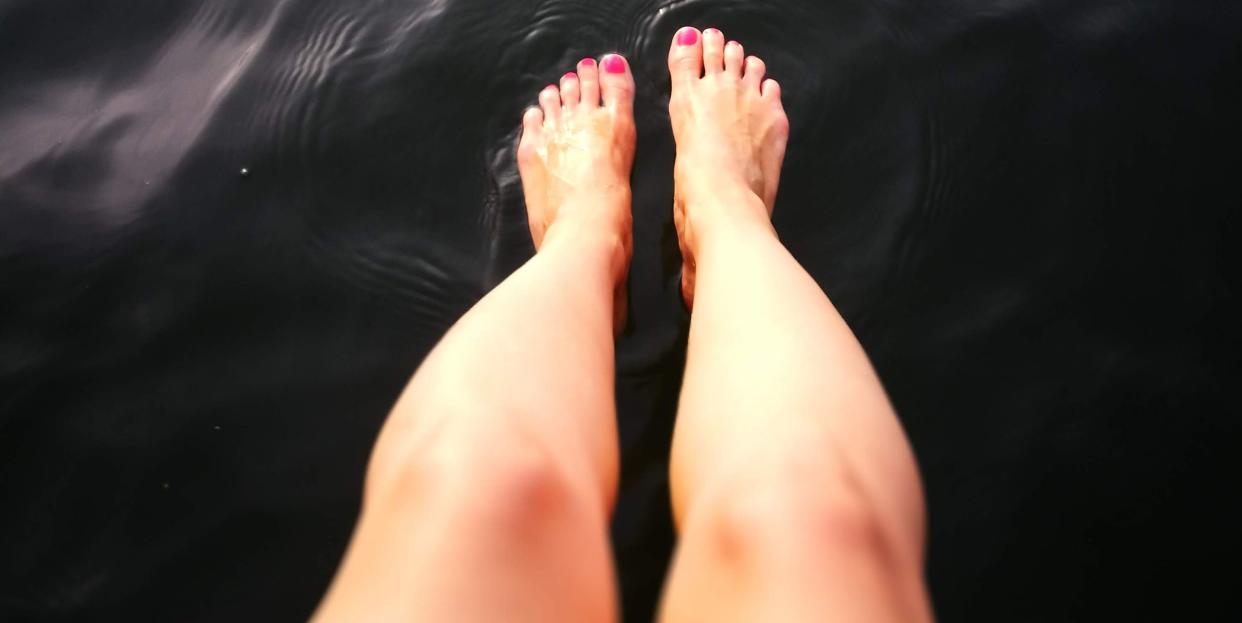What causes varicose veins and how to treat them

This might make you feel squeamish, but let’s unpack veins. Spider veins...varicose veins... the ones that have you reaching for a maxi dress or trousers because the simple summer pleasure of baring your legs has become a self-conscious ordeal.
Greeny-blue, sometimes twisted, sticky-out varicose veins appear when the valves in the venous system of your legs stop working properly and blood begins to pool.
WHAT CAUSES VARICOSE VEINS?
There’s a well-proven familial link. If your mother has them, there’s a 45% chance you’ll get them, rising to 90% if both parents do, according to consultant venous surgeon Professor Mark Whiteley at The Whiteley Clinic.
Crossing your legs doesn’t cause them, neither does being on your feet all day, though standing for long periods can make them worse. Despite the fact that many women develop them when pregnant, varicose veins have nothing to do with hormones, rather they’re a result of the increase in blood volume that occurs during pregnancy, which puts pressure on the venous system. While they shrink after birth, they rarely disappear.
WHAT CAUSES SPIDER VEINS?
When it comes to smaller purple and red spidery thread veins, the important thing to know is that, in the majority of cases, they’re a sign of underlying varicose veins, and to properly identify what lies beneath, you’ll need a specialist duplex ultrasound.
Pinpointed issues could include problems with the pelvic veins, which is significant because many women who suffer the resulting chronic pelvic pain are often misdiagnosed with endometriosis, believes Whiteley.
VARICOSE VEIN TREATMENT
So, if you do have an underlying problem, what’s the treatment? Coming soon is the first non-invasive technique, which uses ultrasound, beaming energy through the skin from the outside. Until it lands (Whiteley will offer it first in the UK), there are only invasive procedures microwave ablation, laser ablation and radio frequency.
Although the technology is different, the process is the same –legs are loaded with local anaesthetic and a needle is passed into and up the vein to be treated, followed by a thin catheter through which the energy is fired to close or destroy the vein wall. It’s a bit like having a dental filling – there’s no pain, but you feel tugging and movement.
Scars are tiny, as it’s pinhole surgery, and you’ll walk out after less than an hour wearing bandages that you swap the next morning for compression stockings; worn for two days. There can be some pain and bruising afterwards. Another technique, ClariVein, claims to cause less pain and bruising and doesn’t need anaesthetic (just a stiff gin?). It uses a spinning wire to damage the vein wall and a drug to close it.
With underlying veins dealt with if need be, smaller veins are easily treated with sclerotherapy, in which a substance is injected into the vein to destroy the wall. It stings.
Compression stockings are a must afterwards and need to be worn day and night for 15 days to stop blood flowing back into the vein, clotting, and brown marks forming on the skin, which can be permanent. For this reason, it’s a procedure best done in winter from a comfort and wardrobe perspective.
Laser can work on leg thread veins, too, but there’s a risk of being left with permanent white burns, which is why most experts prefer painstaking sclerotherapy. And that’s the rub with leg veins: there aren’t any quick fixes, so they are best viewed as a long-term project.
CAN YOU GET VARICOSE VEIN TREATMENT ON THE NHS?
You may receive treatment on the NHS for varicose veins. Private medical insurance will cover treatment if you have symptoms such as aching, itchy or heavy legs, swelling or red or brown skin patches on your ankles. Neither will cover veins that are simply a cosmetic problem. Costs in private clinics vary. At The Whiteley Clinic, microwave and laser ablation start at £1,799, a specialist scan is £379 and thread vein sclerotherapy is £387 for the first session.
Subscribe to Red now to get the magazine delivered to your door. Red's latest issue is out now and available for purchase online and via Readly or Apple News+.
Like this article? Sign up to our newsletter to get more articles like this delivered straight to your inbox.
You Might Also Like



